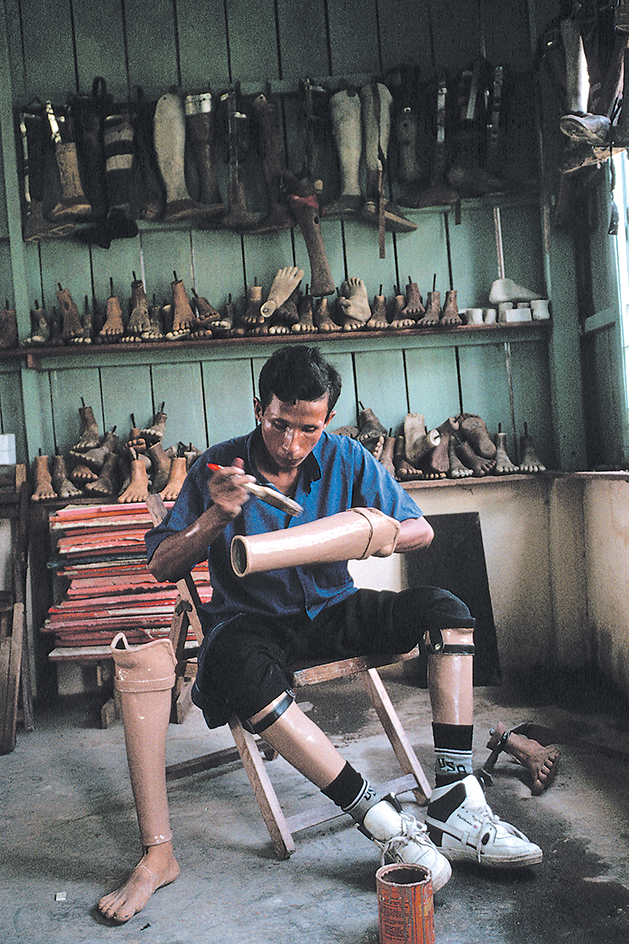Prosthetics, << pros THEHT ihks, >> is a branch of medicine that deals with supplying artificial parts for the body. An artificial part, called a prosthesis, replaces a body part lost as the result of injury, disease, or a birth defect. A prosthesis serves one or more of three basic purposes: (1) it duplicates, as well as possible, the functions of the missing part; (2) it provides structural support for remaining tissues; and (3) it improves the person’s appearance.
A set of false teeth is an example of a prosthesis that serves all three purposes. A limb prosthesis provides a functional–and in some cases, cosmetic–substitute for a missing arm or leg. Some types of prostheses are implanted within the body. For example, diseased or damaged joints, particularly of the hip and the knee, may be replaced by functional prostheses made of metal and plastic. Synthetic arteries and veins may replace blocked or ruptured blood vessels. People with heart problems may receive artificial heart valves to replace faulty ones. An artificial breast is a type of cosmetic prosthesis used by some women who have had a breast removed because of cancer.

Some prosthetic devices perform the function of a defective body part but do not replace the part itself. For example, an implanted electronic mechanism called a pacemaker regulates the beating of the heart. Other devices replace an internal organ but are attached from outside the body. One such device is a dialysis machine, which does the work of the kidneys.
See also Artificial limb ; Dentistry (Prosthodontics) .
